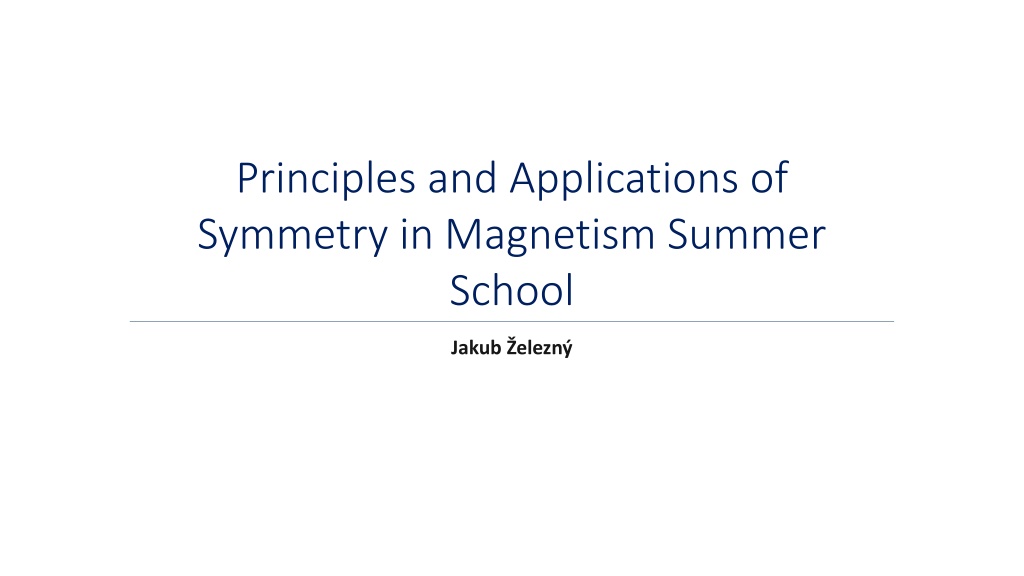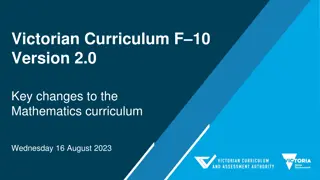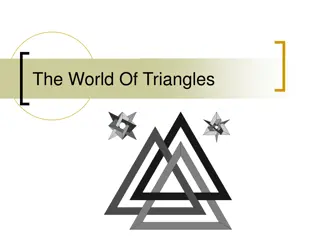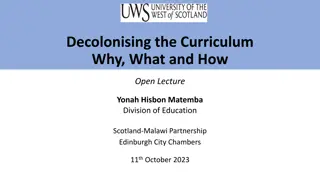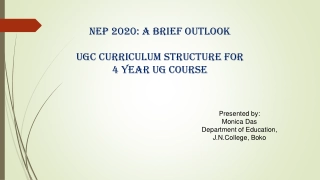Insights into Symmetry and Magnetism in Summer School Curriculum
Delve into the principles and applications of symmetry in magnetism through topics like tensor transformations, Edelstein effect, and breaking inversion symmetry in magnetic materials. Explore the role of crystal structures and interfaces in breaking symmetry, especially in antiferromagnets, providing effective control and understanding the atomic permutations through PT transformations.
Download Presentation
Please find below an Image/Link to download the presentation.
The content on the website is provided AS IS for your information and personal use only. It may not be sold, licensed, or shared on other websites without obtaining consent from the author. Download presentation by click this link. If you encounter any issues during the download, it is possible that the publisher has removed the file from their server.
Presentation Transcript
Principles and Applications of Symmetry in Magnetism Summer School Jakub elezn
Symmetry of response (and other) tensor Transformations of tensors Time-reversal symmetry Tensor symmetrization Beyond point groups Symmetry of local effects Equivalent magnetic configurations Expansions in magnetization Symmetry of magnetic interactions Non-relativistic symmetry analysis How it works? Determining the non-relativistic symmetry operations What it s used for? Symmetr a code for symmetry analysis
Edelstein effect (inverse spin-Galvanic effect, Magneto-electric effect) Spin induced by electric field (current)
In magnetic materials the Edelstein effect generates a torque on the magnetic order => spin-orbit torque Even under inversion Odd under inversion ? is odd under inversion Inversion symmetry must be broken
Inversion symmetry can be broken either by the crystal structure or by an interface GaAs Interfacial torque
In antiferromagnets we are interested in Edelstein effect on each sublattice We cannot use point group, but need the full space group B MnB Large fields needed MnA B B Effective control Mn2Au
Body-centered lattice: only three non-equivalent sites MnB The tetragonal unit cell is the conventional unit cell => unlike the primitive cell it has the full symmetry of the lattice MnA Mn2Au
Inversion Time-reversal Inversion + Time-reversal (PT) is a symmetry of the system MnA MnB MnB MnA Au Au Inversion transforms the atoms: Atomic permutations
For local effects we need to keep track of the permutations PT transformation:
Symmetries that transform ? ? connect ?? and ?? Symmetries that transform ? ? restrict the form of ?? Given in a coordinate system such that: Group of symmetries that keep A invariant => Site symmetry group Mn2Au group Im mm: These can be ignored
Rotation around y 1 3,0,0 2 3,0,0 MnA position: 1 3,0,0 = 1 ? 3,0,0 MnB position: MnA, MnB site symmetry m 2 m point group
The symmetry of ?? can now be determined the same way as the global effects using the site symmetry group Determined from PT, but we could equivalently use any other symmetry operation that connects MnA and MnB
Inversion symmetry transforming A: B => ??= ?? Inversion symmetry transforming A: A => ??= 0 For local Edelstein effect local inversion symmetry breaking is necessary
Moments along x Moments along y Different states, but symmetry related Connected by 4? - symmetry of the non-magnetic system, but not the magnetic one
To identify the equivalent magnetic configurations, we transform the magnetic order using the symmetries of the non-magnetic lattice (including time-reversal) Symmetry operation ? with site permutation ? Corresponds to possible magnetic domains
? All physical properties are connected by ? ? ? Energy ? ?? ??? 1 Magnetization ? Conductivity
Time-reversal is always symmetry of the system without spin-orbit coupling States with flipped moments are always connected by time-reversal ?
We are often interested in the dependence of system properties on the magnetic order orientation In ferromagnets: dependence on the direction of ? In collinear antiferromagnets: dependence on the direction of N el vector ? = ?? ?? In non-collinear magnetic systems, more order parameters are necessary Assuming that the exchange is large any dynamics of the magnetic order corresponds to a rotation of all moments and small canting
Only specific direction are connected by symmetry, for general orientations no symmetry relation exists We can find approximate relations
Simple ferromagnets Expand properties of interest in powers of M: Expansion coefficients are tensors, which can be symmetrized the same way as other tensors using the non-magnetic symmetry operations Such expansions usually work quite well because the dependence on the orientation is due to spin-orbit coupling, which tends to be small
Symmetry ?: Must hold for all terms of the expansion ? rotation: 1and ??? 1 Transpose ??? Rename ? ?,? ? Must hold for all ?? and ??
Component ? contravariant, ??? covariant P-even Even terms are even under T, odd terms are odd In general: Transforms as ???? Covariant P-even T-even for even terms, T-odd for odd terms
Antiferromagnets (and more complex magnets in general) ? does not transform the same as ? ?? We need to keep track of the permutations
Define L transformation matrix: May not always be possible!
Unit cell Unit cell These two states are also symmetry related but not dot correspond to rotation of the ?vector
Example: Edelstein effect in Mn2Au MnB Field-like torque MnA Since we are considering a local effect: ?~?? For in-plane electric field and assuming ????=???? Anti-damping torque J. elezn et al., ??? 95,014403 (2017)
Classification of field-like (0th order) Edelstein effect Rashba Dresselhaus Weyl J. elezn et al., PRB 95, 014403 (2017)
Even Odd Bz J||x By J||x Bx J||x Bz J||y By J||y Bx J||y Bx J||x Bz J||y By J||y J. elezn et al., PRB 95, 014403 (2017) Zelezny et al., PRL 113, 157201 (2014)
Spin-orbit torque switching experimentally observed in CuMnAs and Mn2Au Jwrite [010] + [100] Jwrite 30 m - Jread RT P. Wadley et al., Science (2016) DOI: 10.1126/science.aab1031
Anisotropic magnetoresistance (AMR) in MnTe AMR is dependence of ????? on the magnetic order Expansion of conductivity up to 6th order in L Anomalous Hall effect
Symmetry of magnetic interactions Magnetic interactions are commonly described by a semi-classical Hamiltonian Simple example: Uniaxial anisotropy Heisenberg exchange In general: Tensors
How does H transform? ? symmetry of the non-magnetic crystal: transforms ?as Must hold for all expansions terms ?:? ?,? ? ?:? ?,? ?
Additional constraint: Indices corresponding to the same moment must be symmetric
Cubic ferromagnet Corresponds also to interactions between different unit cells Isotropic Heisenberg exchange Only one site Constant!
Example: Mn2Au MnB Normal exchange, but anisotropic due to the tetragonal symmetry MnA
Example: Mn2Au MnB Assume: | ? | = 1 Uniaxial anisotropy along the z-axis MnA Because the expansion coefficients are not independent we can get 0th order terms in the 2nd order expansion, etc.
Summary Symmetry of local effects We need to keep track of the transformation of individual atoms (permutations) => full space group necessary Local properties are determined by the site symmetry group Relations between different sites can be determined from symmetries that connect the two sites Equivalent magnetic configurations Transforming a magnetic state by symmetry operation of the non-magnetic crystal => all equivalent (symmetry related) magnetic configurations are obtained Requires full space group Expansions in ? or ? By expanding properties of interest in the order parameter direction, we can get approximate information about the dependence on the magnetic moments orientation Requires space groups in general
